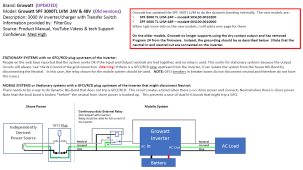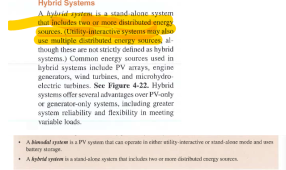Not sure what I was doing wrong previously, but it worked fine the second time around. Getting it in to AC bypass mode allowed me to test if there was any current on the incoming Ground cable.
With around 7A on the incoming Neutral cable, there was 0.01A on the Ground cable.
So, with the firmware version that I have, the Growatt SPF5000ES appropriately creates the N/G bond in battery mode, and removes the N/G bond in AC bypass mode.
(I imagine this is why I've seen some people mention a firmware update broke the "external N/G bond relay" functionality - it's done internally now)
I've linked a copy of my finalised AC wiring for the installation.
I must stress, by the sounds of what others have posted, this functionality is dependant on what firmware version you have. So updating the firmware seems a fairly important step for this inverter.
View attachment 81118









